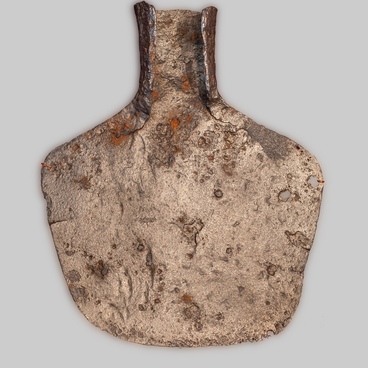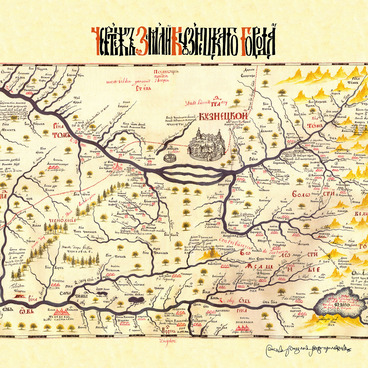TomAr is a bone arrowhead for fur game hunting. It is oval in shape with a slightly pointy tip and hollow inside. The entire external surface of the arrowhead is covered with circular decoration – 0.5 cm circles with a point inside. The arrowhead was found during excavations of Kuznetsk ostrog.
Other names for that arrowhead are ‘tomar strelny’ or ‘tomara’. They were mainly made from bone, but iron items could also be encountered. Besides the fur game hunting, those arrows could be used for fowling. Tomar with a faceted tip was also used in battles.
An arrow with a thickened tip and no arrowhead could also be called tomar. The size and shape of bone arrowheads (tomar) could be different: hollow cylinder, or oval. According to a game manager Barschevsky, large tomsrs, especially cylindrically shaped ones, could be used to hunt large fur game, first of all, beavers.
Other names for that arrowhead are ‘tomar strelny’ or ‘tomara’. They were mainly made from bone, but iron items could also be encountered. Besides the fur game hunting, those arrows could be used for fowling. Tomar with a faceted tip was also used in battles.
An arrow with a thickened tip and no arrowhead could also be called tomar. The size and shape of bone arrowheads (tomar) could be different: hollow cylinder, or oval. According to a game manager Barschevsky, large tomsrs, especially cylindrically shaped ones, could be used to hunt large fur game, first of all, beavers.
Beavers could be hunted all year round. It is very unlikely that such arrowheads were used to hunt squirrels or martens – they were too large for that game. Small tomsrs were used to hunt small-size pelting animals.
Indigenous population of Siberia paid a tribute –“yasak ‘– in furs of pelting animals. Apart from costly sable fur, the hunters valued beaver, fox, glutton, weasel, and otter fur skins. A special blunt arrow, tomar, killed the animal but did not damage the valuable fur.
The Russian nationals also got engaged in fur trade right upon their arrival to Siberia. Furs were the only Siberian commodity in those times. It could be exchanged for any other goods. The need for those was especially urgent in the first years when the Russian population found themselves in poor Siberian regions where neither agriculture farming nor industry were developed.
The hunters established hunting teams as that was safer and more efficient than hunting individually. They sold the fur skins to the merchants from central Russa who came to Siberian cities to that end. Sable fur was valued the highest. It was never sold on the open market but went directly to the government coffers.
Indigenous population of Siberia paid a tribute –“yasak ‘– in furs of pelting animals. Apart from costly sable fur, the hunters valued beaver, fox, glutton, weasel, and otter fur skins. A special blunt arrow, tomar, killed the animal but did not damage the valuable fur.
The Russian nationals also got engaged in fur trade right upon their arrival to Siberia. Furs were the only Siberian commodity in those times. It could be exchanged for any other goods. The need for those was especially urgent in the first years when the Russian population found themselves in poor Siberian regions where neither agriculture farming nor industry were developed.
The hunters established hunting teams as that was safer and more efficient than hunting individually. They sold the fur skins to the merchants from central Russa who came to Siberian cities to that end. Sable fur was valued the highest. It was never sold on the open market but went directly to the government coffers.



